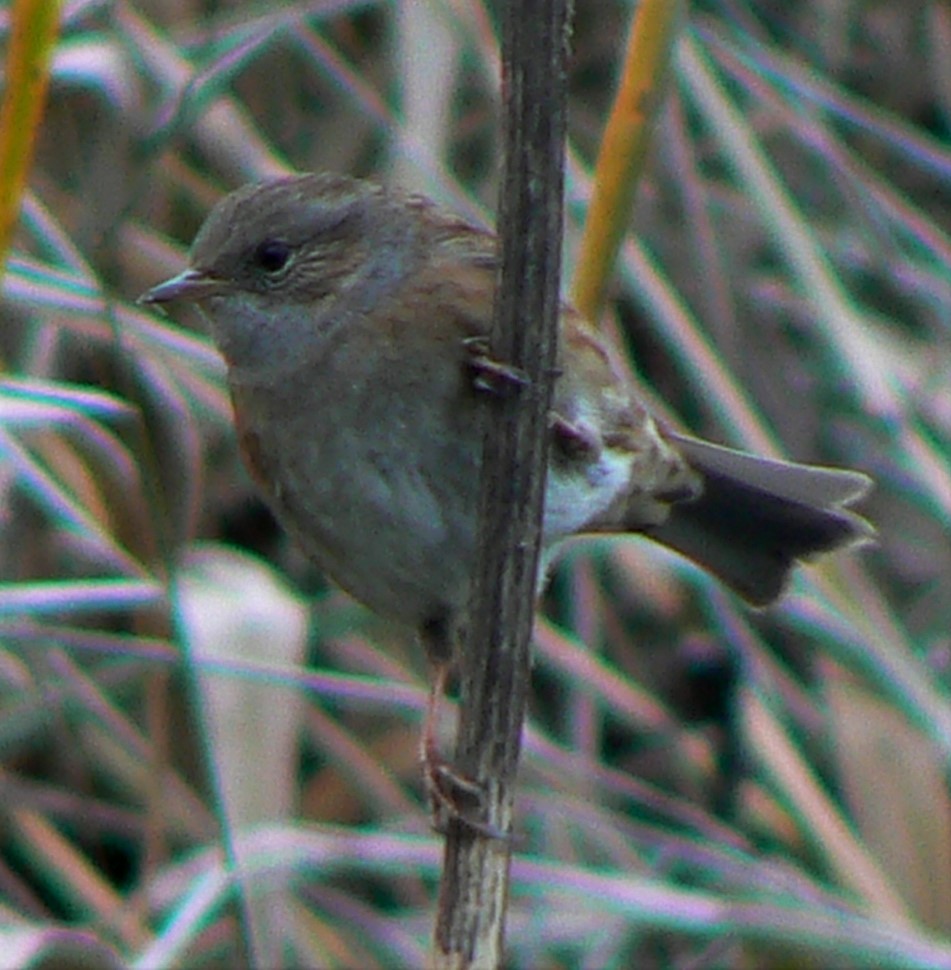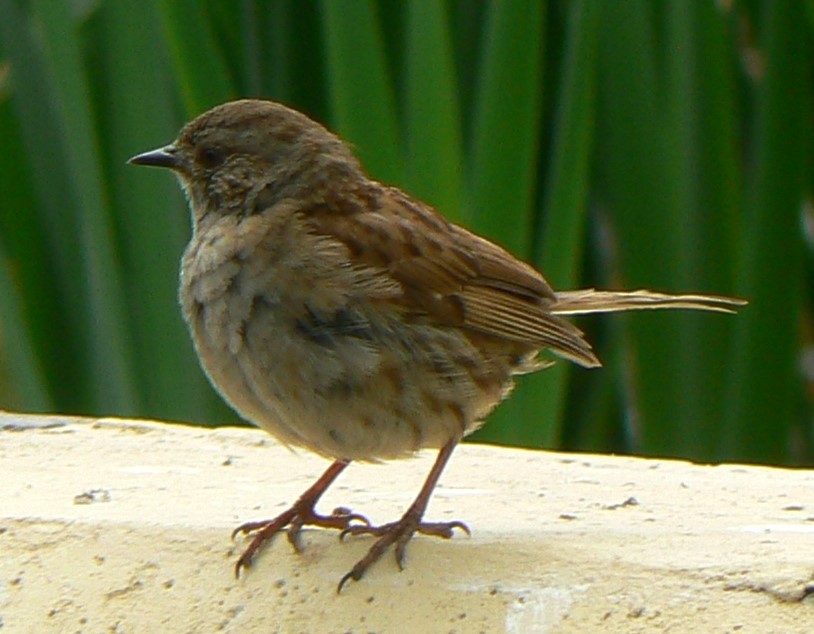
[279] Prunella modularis, Dunnock
Introduction
There are several anomalies in the names of Prunella modularis, the Dunnock.
Many bird books and other sources give it the name Hedge Accentor but it almost always called a Dunnock. Other species of Prunella are usually called Accentors but, confusingly they can also be called Dunnocks.
It is also known as a Hedge Sparrow (although it is not a Sparrow) and sometimes, a Hedge Warbler. You have probably guessed that it is not a Warbler.
The conventions for the scientific names of animals and plants are slightly different and completely separate. They allow the genus name Prunella to be used also for plants and Prunella vulgaris, Self-heal, is a small plant generally known as a weed in gardens and lawns – see [193] Deadnettle. (The rules for Fungi and Algae and other more obscure groups are also different!)
Taxonomy
Kingdom – Animals
Phylum – Chordates
Class – Aves (Birds)
Order – Passeriformes
Family – Prunellidae (Just Prunella)
Genus – Prunella
Scientific Name – Prunella modularis
It was originally named Motacilla modularis, then Accentor modularis, both by Linnaeus in 1758
Names
We can start with Dunnock and Prunella, both just meaning brown. Dunnock is a diminutive of dun and Prunella comes from an early Germanic name for the bird, Braunelle, a diminutive of ’braun’.
Accentor was an earlier scientific name for the genus, coming from Latin ad-cantor meaning ‘singing with another’ cognate with accent. It has become the usual common name for birds of the genus.
Modularis is Latin and means singing.
It is no surprise that it is called the hedge sparrow as many small brown birds are called sparrows, including about a hundred species of New World Sparrows. Similarly, it is a small brown bird with a song not unlike many birds classified as Warblers.
Description
Accentors in the genus Prunella are the only genus in their own family Prunellidae, so they are not in the same family as Old World Sparrows or New World Sparrows or the several families of Warblers.
But, like many small passerine birds, the Dunnock is the same size and general appearance as a sparrow. They are. mottled brown om appearance. Adults have a dull grey head, which is sometimes the best distinguishing feature.




The mottling on the back has darker shades of brown, while the underparts are much lighter, still attractively mottled.





Juveniles lack the grey head and tend to have more marked mottling.


They are less open with humans and tend to forage at ground level.
In Spring the male bird may be seen and heard as he sings from the top of a bush. The song is a rapid tinkling sound.

Habitat
The Dunnock is the only common species of Prunella normally found in lowland areas and it is common over much of Europe including all of the UK.
They like woodland habitats, parks and gardens and hedgerows.
Other Notes
Dunnocks are not as obvious as other birds because they keep to ground level eating worms and insects. In rural locations they will visit areas that have bird feeders but rarely actually come to the feeders. They generally just scavenge at ground level for seeds that are dropped.

